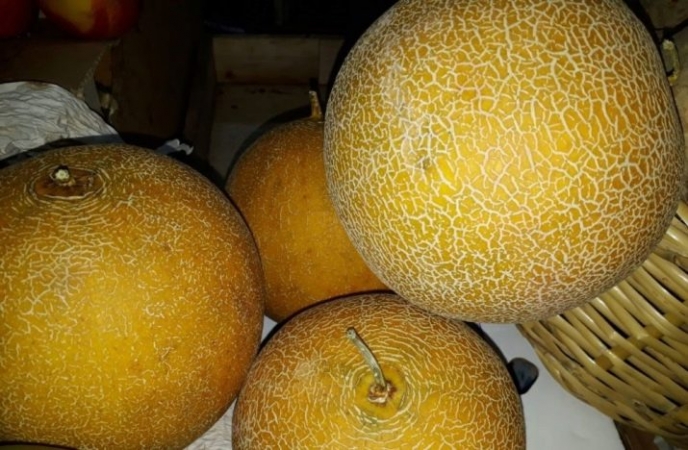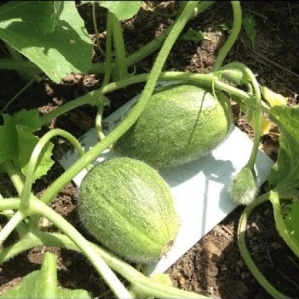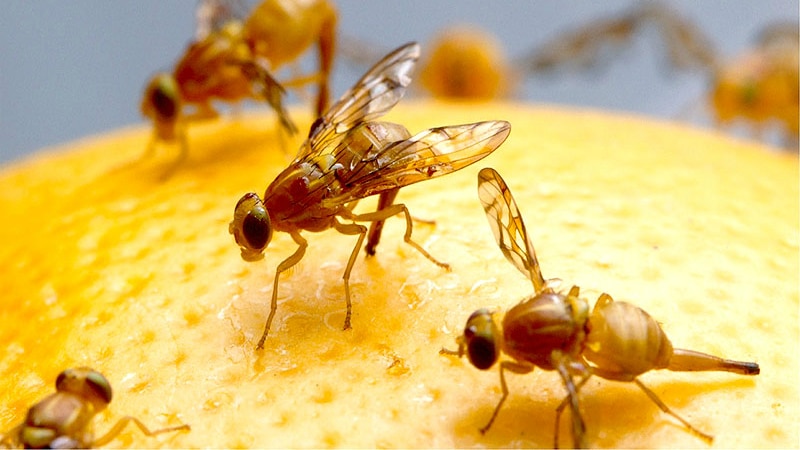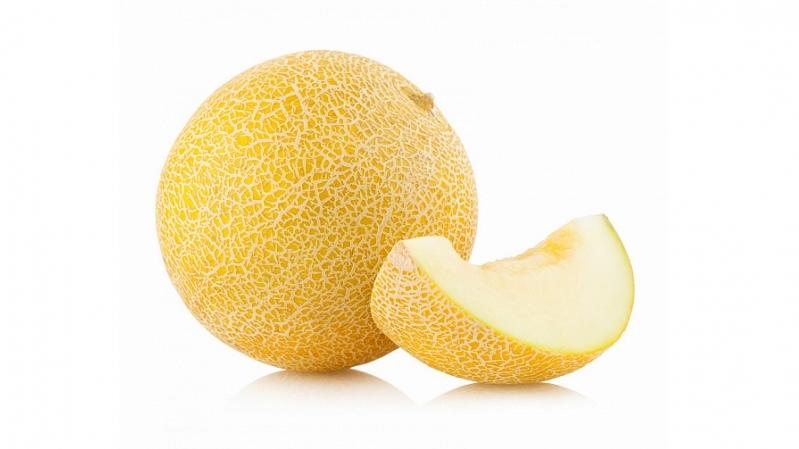Early ripe yellow melon "Tale F1": growing and care, the nuances of choosing when buying ripe fruits
Melon Skazka F1 is a hybrid loved by gardeners all over Russia. It lives up to its name, because it takes a minimum of time and effort to grow a Tale melon.
Ripe fruits are very juicy and have a sweet taste; they are widely used in cooking. What else is different about the hybrid, we will consider further.
The content of the article
Description of the variety
 The hybrid is highly resistant to temperature extremes, tolerates drought and heat without consequences. The Fairy Tale is grown both in the open field and in a greenhouse, depending on climatic conditions.
The hybrid is highly resistant to temperature extremes, tolerates drought and heat without consequences. The Fairy Tale is grown both in the open field and in a greenhouse, depending on climatic conditions.
Distinctive features
Variety early maturing, summer residents harvest in 55-60 days from the moment of planting. Bushes are small, lashes are of medium length, leaves are rich green.
The plant is demanding on the composition of the soil, so gardeners are advised to grow it in nutritious and loose soil. The tale is distinguished by the simultaneous ripening of all fruits.
Composition, calorie content and benefits
In addition to its sweet taste, the Skazka melon contains vitamins of groups B, A and C, E and H. The fruits are rich in minerals: magnesium, calcium, iron, phosphorus, zinc.
Use melons strengthens the immune system, improves metabolism, saturates the body with useful substances, and also has an anti-stress effect.
100 g of product contains:
- 33 kcal;
- 0.6 g protein;
- 0.3 g fat;
- 7.4 g of carbohydrates.
Fruit characteristics and yield
The fruits of the Fairy Tale are attractive rounded melons of deep yellow color. The color is even, the stalk has a white mesh. Weight varies from 1 to 1.6 kg. The flesh is light creamy color, very juicy and sweet.
From 1 sq. m gardeners collect about 3-3.5 kg of mouth-watering, beautiful fruits.
How to choose fruits when buying
Melon Fairy Tale appears on supermarket shelves in mid-July and is sold until the end of September. Experts advise buying the Fairy Tale from mid-August - it is at this time that the most delicious and high-quality harvest is sold.
In order not to be mistaken with the choice, follow the following recommendations:
- Pay attention to firmness. Melon should not be too hard or soft. Press lightly on the middle: it should be slightly softer than the edges.
- If the melon smells of honey and sweetness, then it is ripe. If the smell is too strong, the fruit is overripe; if it doesn't smell at all - it's immature.
- The surface should be flat, free from dents, cracks and scratches.
- Melon Fairy Tale must be bright yellow, without veins.
- Trust only trusted places of purchase.
How to grow a variety yourself
Since the hybrid is picky about the soil, experienced gardeners prepare nutrient beds in advance. At the end of October, they dig up the soil, burn garbage and weeds. Ash and lime are added to the soil to reduce the acidity of the soil and make it more favorable for the melon.
With the arrival of spring, the beds are dug again so that the soil is lighter and more airy. Melon is planted on a cool day, after preparing the seeds.
Landing
The Fairy Tale is planted in two ways: seedling and seedless. The first method is suitable for regions with unpredictable climatic conditions, for example, for the Urals and Siberia. For seedlings, you need soil and a container. Manganese-treated soil from a vegetable garden or a ready-made soil composition "Universal" is suitable as a soil.Any container is used as a container, for example, wooden boxes or special peat tablets.
Before planting, be sure to disinfect the seeds. For this, aloe juice or hydrogen peroxide is suitable. The seeds are soaked for 12 hours, after which they are thoroughly dried and placed in the ground. The seedlings are kept in a sunny place, watered once every 2 weeks. When watering, it is important that the moisture gets directly under the root, bypassing the stem and leaves. To accelerate the growth of seedlings, use the stimulant "Kornevin", which strengthens the immunity of the sprouts.
Important! Regardless of the method of planting, the seeds must be disinfected. If this is not done, the risk of developing fungal diseases and viral infections increases.
Seeds are planted in mid-May, when frosts have passed. In the open field, the planting scheme is 70 × 150, in the greenhouse - 70 × 70. Since the Fairy Tale needs to be shaped and pinned, a wooden peg is placed next to each bush.
After planting, the beds are covered with a layer of straw. It is necessary in order to reduce moisture evaporation and control the growth of weeds. After planting, the beds are abundantly watered with filtered water, the next watering is carried out only after 7 days.
Care
The care of the Skazka variety is traditional and does not require special knowledge and skills. The beds are watered once every 3-5 days. 1.5-2 liters of water are spent on 1 bush. If the summer is dry, the amount of watering is increased, if it is humid and hot, it is reduced. Once a week, a nettle-based solution is used instead of water, which serves as an effective pest control.
 Often, watering is combined with loosening and removing weeds. Loosening improves the quality of the soil, which is beneficial for plant development. Loosen the beds carefully so as not to damage the rhizome. Weeds are removed to prevent the risk of disease.
Often, watering is combined with loosening and removing weeds. Loosening improves the quality of the soil, which is beneficial for plant development. Loosen the beds carefully so as not to damage the rhizome. Weeds are removed to prevent the risk of disease.
Full care of the melon is impossible without regular feeding. Both organic matter (liquid mullein, chicken droppings) and mineral complexes ("Zdraven") are used as fertilizers.
Fertilize the Tale every 10-15 days, the first feeding is organized 2 weeks after planting. Foliar alternates with root dressings. It is also helpful to spray the bushes with soapy water to protect them from fungus.
Features of cultivation and possible difficulties
Regardless of the place of cultivation, the Skazka variety needs the formation of a bush. It is necessary in order to get as many healthy and tasty vegetables as possible. Form the plant into one stem, removing all lateral shoots. The lashes are pinched over the 4th and 5th leaves, the rest of the ovaries are removed. In order for the shoots to grow in the right direction, they are tied to wooden stakes.
Important! If the fruit has grown large, place wooden crates underneath to prevent rotting from contact with wet soil.
When growing melons in a greenhouse, gardeners recommend regularly ventilating the room. This is due to the fact that the structure has a special microclimate and high humidity, which can harm the plant. To do this, open the door and windows once a day, letting fresh air into the greenhouse. When growing Fairy Tale in the open field, in addition to standard fertilizers, potassium monophosphate is added 1-2 times per season, which maintains the water balance and positively affects the quality and taste of the fruit.
Diseases and pests
The most common pest is the melon fly. It leaves its larvae inside the fruit, causing them to rot. The melon fly attacks crops at any moment of development, be it flowering or fruiting. As a preventive measure, summer residents use soap spraying (100 g of dry grated soap per 10 liters of water), and as therapeutic measures - effective drugs (Aktara or Iskra).
Another dangerous pest is the spider mite. He weaves a thin transparent web that envelops the sheets and takes all the juices from them. As a result, the bushes dry up, and the fruits lose their elasticity and taste.To combat spider mites, sprays based on whey are used. The method is safe for humans and very effective.
Note... Of the diseases, melon is most often affected by fusarium wilting. The bushes are covered with a gray bloom and wither. Potash dressings are used as preventive measures, and a solution of 1% Bordeaux liquid is used for treatment.
Harvesting and application of the crop
The Fairy Tale melon is harvested when its fruits acquire a characteristic yellow color and a sweet melon aroma... Ripe fruits should be firm, without cracks or dents. A cloudy dry morning is chosen for harvesting. Melons are wiped with a dry cloth and stored in a cool, dark place. So they are better stored and do not lose their qualities. To keep the shelf life as long as possible, the fruit is plucked together with the stalk.
In addition to traditional jellies, sorbet and marmalade, interesting cold snacks and drinks are prepared from melons. For example, candied melon peels, melon cakes, cold smoothies and refreshing cocktails. The sweet taste of the fruit is perfect for preserves, jams and marmalades. At the same time, melon desserts are lower in calories compared to chocolate, so they can be safely consumed in a healthy and dietary diet.
Interesting... In the Mediterranean countries, sweet melon is served with ham. The melon pulp is lightly sprinkled with black pepper and wrapped in a thin slice of ham.
Advantages and disadvantages of the variety
Variety Skazka - a valuable find for a sweet tooth... Melon has a juicy and rich sweet taste and aroma. The hybrid is easy to grow and care for and shows stable yields both outdoors and in greenhouses. It rarely gets sick and is almost not exposed to insect pests.
Sometimes gardeners have difficulty forming a bush and pinching the top. Otherwise, the Fairy Tale has no significant drawbacks.
Read also:
Is it possible to eat a melon with gout and how is it useful?
Is it possible to eat a melon during pregnancy: benefits, harms and contraindications.
Reviews
The Internet is bombarded with positive comments about Skazka, although there are less enthusiastic comments among them.
Alina, Voronezh: «Our region is ideal for growing melons. I especially love the Skazka variety. It turns out very beautiful and fragrant melons, some of which my family eats fresh, and some we process and make melon jelly and jam. "
Vasilisa, Orsk: “I grow the Skazka melon exclusively in greenhouses to avoid bad weather. In general, the variety is good, the taste is, as expected, sweet. In my garden, the yield is average, I remove 1.5-2 kg of fruit from 1 bush. "
Marina, Penza: “Sort Skazka disappointed me. 3 weeks after planting, I saw a melon fly in the beds, brought it out only after 4 days. During this time, the pest managed to spoil half of the bushes. The remaining melons grew small and watery. "
Conclusion
Melon Fairy Tale is liked by gardeners not only for its simplicity in growing and excellent taste, but also for its many useful properties. Vitamins improve the quality of the skin, moisturize it. Magnesium and potassium are essential for vision, while calcium is essential for bones and joints. It is necessary to saturate the body with useful elements not only in summer, but also in winter. Simple and tasty canned melon dishes will help you with this.